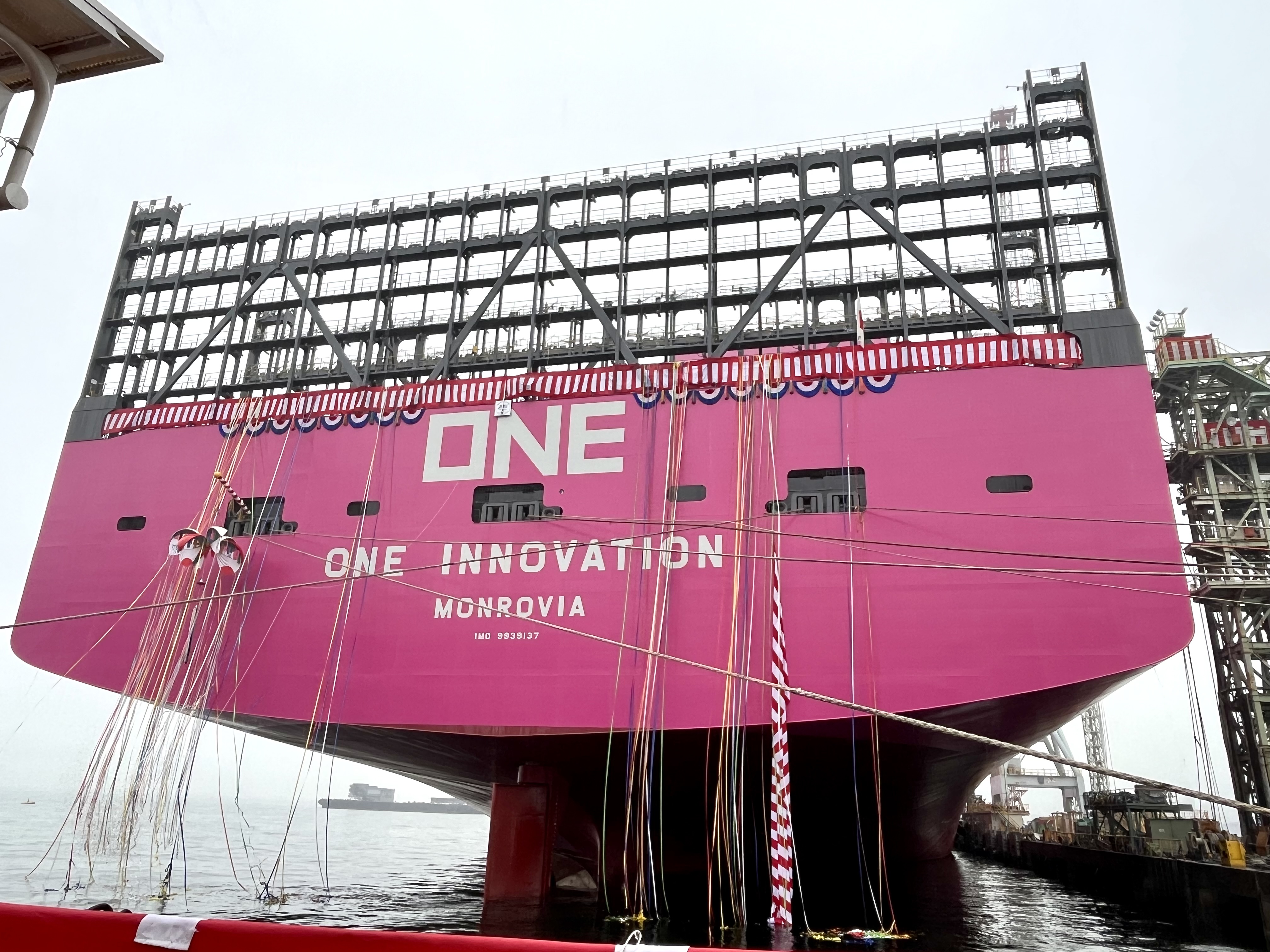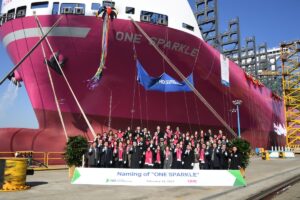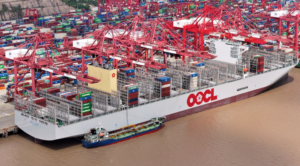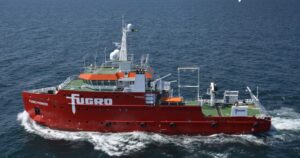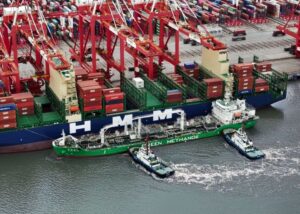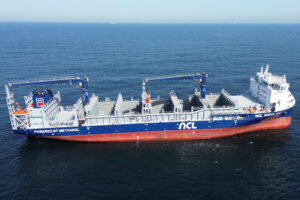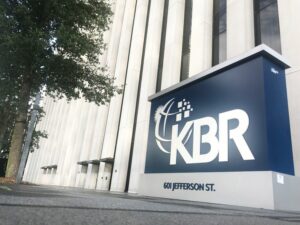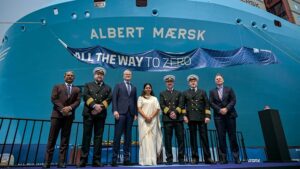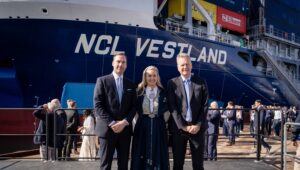Decisive years ahead: ONE’s fuel choice conundrum for 20 methanol-ammonia newbuilds
The jury is still out on the fuel choice for a series of twenty new vessels the Singapore-based container shipping major Ocean Network Express (ONE) has on order.
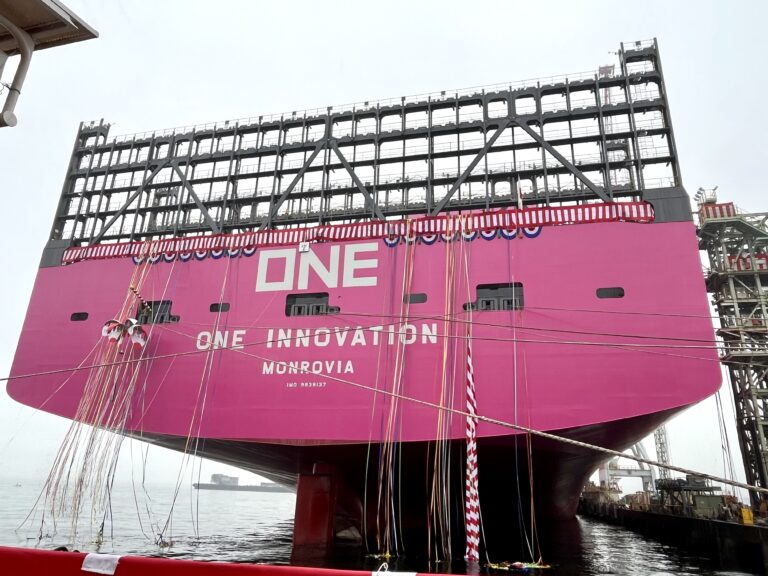
“We haven’t made a decision yet on which technology to choose. The jury is still out and like the rest of the industry we are very interested in methanol at the moment but there are other solutions coming down the pipe,” Jeremy Nixon, CEO of Ocean Network Express, said during a media conference on July 7.
ONE placed an order for ten 13,700 TEU methanol/ammonia-ready containerships in March 2023. The units will be equipped with a bow shield and other energy-saving technologies. The order followed the one made in May 2022 for ten eco-efficient very large container ships.
The 20 ships are being built by Imabari Shipbuilding, Hyundai Heavy Industries, and Nihon Shipyard, data from VesselsValue shows.
“The last 20 vessels that we announced in terms of newbuilds, which we will actually own and bring onto our balance sheet as ONE, are the new Flex designs. They will come out of the yards in 2024 and 2025 with fuel oil. Very soon after that, we have the ability to retrofit them to either work with ammonia or methanol,” Nixon said.
“When we ordered those ships 12 months back, we knew that there was not enough certainty in terms of methanol and the technological safety factors around ammonia or its availability. But, we think that over the next 12 to 24 months we will see a major breakthrough, hopefully in terms of methanol production and focus, and ammonia as an option as well.”
The new vessels are at the heart of ONE’s green strategy and decarbonization plan, under which the company aims to cut its carbon intensity by 70 percent by 2030 and become net zero by 2050.
The fleet build-up journey
In a strategic move aimed at securing a strong future for the company, ONE has embarked on an ambitious investment plan to revamp its fleet and expand its terminal network.
The company, which was formed through the merger of three legacy shipping firms MOL, K Line and NYK, passed the five-year milestone since its establishment in 2022.
Before becoming the world’s 7th largest carrier and achieving top-tier profitability among industry peers with a net profit of $34.5 billion in the first five years, the company had to overcome teething problems and experienced losses due to start-up difficulties only to be faced with a black swan event brought about by COVID.
Speaking about ONE’s business strategy and results achieved so far, Nixon said that the turnaround to profitable territory by 2019, which continued into the following years, resulted from cost synergies and recovery of cargo volumes after COVID.
Fleet expansion was at the core of the company’s growth strategy as ONE had to modernize its operations and adapt to the changing dynamics of the container shipping industry.
The legacy companies had smaller ship sizes and less favorable slot economics, hindering ONE’s competitiveness in the market. To overcome this challenge, ONE’s management team focused on securing a robust tonnage pipeline for larger ships with improved slot economics.
Over the past three years, the company has actively pursued investments in new ships, with 54 vessels in total. Already, 20 of these ships are in operation, while the remaining 30+ will be delivered between 2024 and 2026.
The majority of the new ships range from 12,000 to 15,000 TEU in size, making them ideal for both the east-west and north-south trade routes. Additionally, ONE has added six 24,000 TEUs of container capacity to its fleet, further strengthening its market position.
The company just took delivery of its first 24K TEU behemoth, ONE Innovation a couple of weeks ago.
“ONE innovation is our latest design 24,000 TEU vessel and she’s just been released from the yard. She came through Singapore about three weeks ago and is now on her way to Rotterdam, fully loaded with over 20,000 containers on board using the very latest innovation design to make sure that the slot economics, carbon efficiency, and intensity are optimal,” Nixon said.
ONE Innovation arrived at RWG in the Port of Rotterdam on July 11. It’s the second biggest container ship in the world. The ship is 400 meters long, 61 meters wide, and can accommodate 24,136 TEU.
Related Article
Lastly, ONE has ten 7,000 TEU under charter as well set for delivery in 2024 which will also be used for its regional trade.
Phase 2: Sustainable Growth
The first phase of the strategy focused on establishing the company, achieving profitability, and operational efficiency. Now, in phase two, ONE aims to sustainably expand its operations while maintaining high-quality service and enhancing asset efficiency.
To support sustainable growth, ONE plans to invest around $20 billion over a ten-year period from 2020 to 2030. This investment will be allocated towards new ship types, equipment, digitalization, and talent development. The company remains committed to a logical and disciplined approach to investment, despite current market fluctuations.
The decision on whether the investments would be assigned from cash reserves or financial deals with lenders would be made on a case-by-case basis.
“We will continue to order tonnage in a very diligent and disciplined way including other assets over next 6-7 years. We will continue to double down on our digitalization. We’ll also look to further enhance the brand, and corporate culture, develop our talent and best practices, as well as innovation within the company. And lastly, making sure that we are still financially sound and strong as a company and looking to grow and build the company in a sustainable way,” Nixon pointed out.
The company is strategically expanding into new trade lanes and markets, focusing on emerging growth areas and adapting to changing sourcing dynamics. By optimizing its assets and investing in the container shipping value chain, ONE aims to stabilize and reduce volatility in its performance.
When speaking about sustainability, that doesn’t just mean in terms of decarbonization, which is of crucial importance, but also financial stability and making sure that ONE is a very efficient and well-managed financial company with a good balance sheet that can lift and grow the business over the next 5 to 10 years, Nixon explained.
Value Chain Investments
As part of its investment plans over the coming period, ONE is looking at the containership value chain.
“We’re looking to invest in other ancillary businesses such as container terminals. We will probably look to bring more container terminals on board over due course, primarily starting with those which are already partially owned by our legacy companies and bring those on to our balance sheet. Key hubs are important for us and also gateway hubs,” Nixon said.
While the company relies on various third-party terminals worldwide, it has strategically invested in key gateways and hubs. In Singapore, ONE holds a 40% equity stake in the Magenta Singapore terminal, a joint venture with the PSA Singapore (PSA), operating four mega container berths at Pasir Panjang Terminal with a combined annual handling capacity of 4 million TEUs.
The company has also recently completed investments in terminals on the West Coast of the United States, including the acquisition of 51 pct in Yusen Terminals LLC and 51 pct in the TraPac facility.
ONE has also become a joint owner of Seaspan Corporation as part of a $10.9 billion acquisition deal of Atlas Corp, Seaspan’s Parent, by Poseidon Acquisition Corp, ONE, and partners. ONE now owns 28.7% of the company.
Seaspan is the largest non-owning operator with a fleet of around about 200 vessels by 2024.
ONE has about 20 vessels on long-term leases with Seaspan, which is about 12% of ONE’s fleet. Over the next 12 months that will push up to around about 35 to 40 vessels, accounting for up to 25% of ONE’s future tonnage provision.
“While we want to keep the operation of the company separate, at the shareholding level we have more strategic alignment and we can look longer term to try to have more strategic involvement with Seaspan in and around the way that we manage our fleet with them and think about some of the synergies and opportunities to improve the technical side of the business and particularly around also newbuilds and decarbonization,” Nixon said.
Decarbonization
ONE established its Green Strategy Team in 2021 with a dual focus on managing its current carbon footprint and planning for long-term decarbonization efforts. The company aims to minimize fuel consumption and CO2 emissions while optimizing existing assets and exploring new technologies and fuel types to achieve sustainable fleet operations. The aim is to cut the company’s carbon intensity by 70 percent by 2030 and achieve net zero by 2050.
“ONE has achieved 50% carbon intensity reduction in 2022 against the base year of 2008,” Jeremy said, adding that the company’s green investment program was on track with 20 methanol and ammonia-ready vessels slated for delivery in 2025 and 2026.
“We’re on the way to beating our 70% carbon intensity objective by 2030.”
As of last year, all new vessels are equipped for shore power supply and/or fitted with bow windshields to reduce emissions. ONE is also employing biofuels by blending recycled catering fats with low-sulfur fuel oil as part of a partnership with the Global Centre for Maritime Decarbonization (GCMD).
“Thinking about the new fuels in our fleet, we intend to have ships deployed and operated with the new green fuels by the end of this decade. And then we will scale that up over the next 20 years based on the fact that we can’t as an industry all build new ships all at the same time. About 3 to 4% of the total global fleet can only be replaced at any one time through the availability of shipbuilding practices. We hope that by then all the new assets that we build in the future will be using green fuels so that by 2050 we can get to the net zero target.”
Market outlook
The dynamic global economic landscape and evolving geopolitical tensions pose challenges to the container shipping industry. ONE acknowledges the demand loss resulting from overordering in previous years and the global economic recession. However, the company anticipates continued growth in container volumes, driven by trade diversification, population growth in Southeast Asia and Latin America, and the gradual resolution of geopolitical issues.
While challenges such as demand fluctuations and trade diversification are anticipated, ONE remains optimistic about the industry’s growth prospects. As global trade continues to expand, driven by population growth and shifting sourcing locations, ONE is well-positioned to capitalize on emerging opportunities.
“We’re very aware that the next 12 months is going to be a bit challenging in terms of getting through the current cycle but there will be good times ahead,” Nixon concluded.

